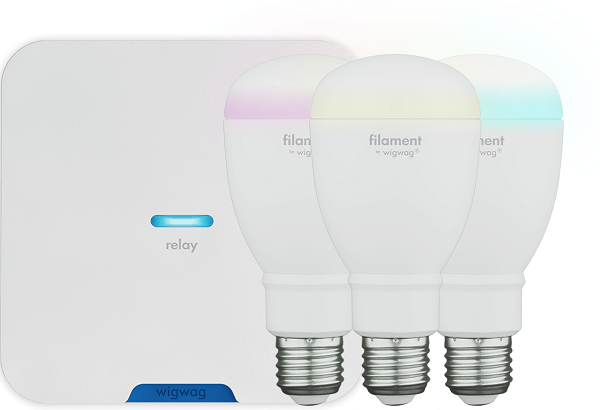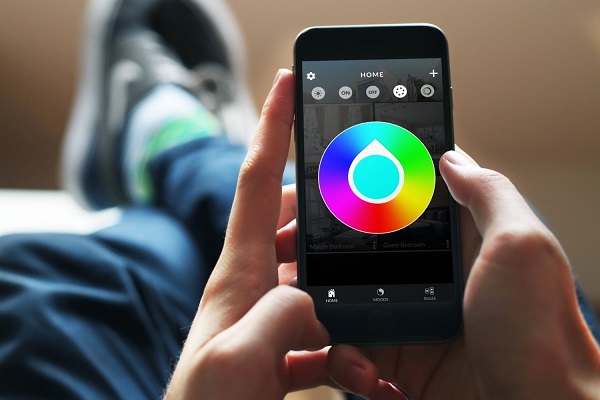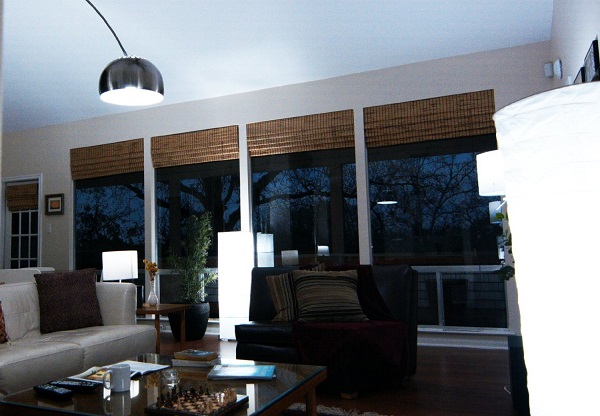WigWag, the award-winning open-source platform company weaving together the fragmented Internet of Things (IoT), today announced general availability of the WigWag Filament Lighting Kit, which empowers users to transform their lighting from ordinary to extraordinary to create the perfect lighting for any mood or occasion with smart and full-color LED light bulbs. As well, the WigWag Filament Lighting Kit enables smart devices of differing brands to work together as a system to save time and energy through automated rules and mobile control.
 |
WigWag launches a lighting kit the inlcudes three bulbs and one WigWag Rely for smart home applications. (All Photos Courtesy of WigWag)
|
WigWag is dedicated to enabling a smart-home evolution with robust, built-in security based on expandable and upgradeable technology accessible to the average consumer. The WigWag Filament Lighting Kit includes three filament bulbs and one WigWag Relay, which is designed to be the digital core of the modern connected home. Think of the WigWag Relay as an OS for the home that gets all of your smart devices working together for you, as if they are all speaking one language. The Relay runs on deviceJS, WigWag’s award-winning open-source software, is interoperable across IoT brands and protocols, is expandable, programmable and works even when the Internet is down.
 |
|
The Relay runs on deviceJS, WigWag’s award-winning open-source software, is interoperable across IoT brands and protocols, is expandable, programmable and works even when the Internet is down. |
“The biggest obstacle to smart-device adoption has been getting disparate technologies to work together,” said Ed Hemphill, co-founder and CEO of WigWag. “Powered by the WigWag Relay —the ‘digital core,’ if you will—the Filament Lighting Kit harnesses the power of our open-source deviceJS platform to provide the foundation for interoperability.”
About the WigWag Filament Kit: Technical Specifications & Compatibility
-
iOS / Android apps available for remote control and simple rules configuration
-
Rule Builder Web application offers complex-rule execution
-
Filament smart LED bulbs:
-
WigWag Relay:
-
includes ZigBee, Z-Wave, and 6loWPAN radios
-
supports IP-accessible devices via the WiFi in your router
-
includes future support for WigWag’s Indoor Positioning System technology
-
Currently compatible with smart bulbs, sensors, switches and other connected devices from brands such as Philips Hue, LIFX, WeMo, Osram, TCP-Connected, GE, Aeon Labs, Fibaro, and more — full compatibility list available
-
Works even when the Internet is down, executing rules locally or in the cloud, plus it’s mesh networking technology reduces lag and dead spots
-
Security Encryption (AES 128-bit) updated every four hours
WigWag breaks down the walls of interoperability so consumers have a choice. By 2019 the typical U.S. home will average 500 connected devices. In 2015 that number was five. WigWag enables smart devices that were originally purchased as point solutions to work together as a system, and makes the benefits of a smart home possible for the average consumer.














